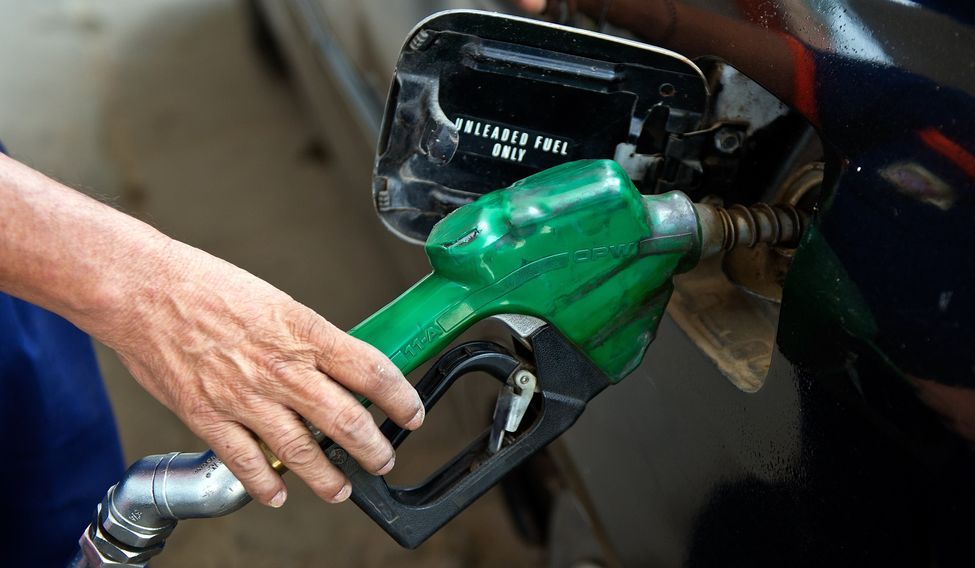On May 23, 2013, the then chief minister of Gujarat and present Prime Minister Narendra Modi had tweeted ‘Massive hike in petrol prices will put burden of hundreds of crores on Gujarat'. That day, petrol price was Rs 71 per litre in Mumbai and global crude oil price was at $ 99.37 per barrel for the Indian crude oil basket.
Fast forward to September 11, 2017, petrol price in Mumbai touched Rs 78 per litre and global crude oil price at $ 54 per barrel. What justifies this falling trend in crude oil prices and the corresponding rise in domestic retail prices of petrol and diesel?
Recently, dealer's commission was hiked by the government as reported earlier by THE WEEK, from 2 and 3 per cent commission for per litre of diesel and petrol sale.
The spike in diesel and petrol prices to its peak, witnessed in 2012-13, was a huge political issue back then. So, on Sept 13 when Minister for Petroleum and Natural Gas, Dharmendra Pradhan called a high-level meeting of top oil ministry officials, no one was uncertain about the reason for the meeting.
The opposition parties led by Congress had been criticising the rise in oil prices, to a four year high. The rise in petrol and diesel prices had been close to 9 per cent in this month alone starting from Sept 1.
In the meeting on Sept 13, the minister was given presentations about the current retail and global oil price trends. After the 90 minute meeting, the minister emerged convinced, saying that the best practice for setting price of fuel is being followed and it will lead to better savings for the consumer.
From July 1 levels, retail prices of petrol and diesel have skyrocketed by 12 to 14 per cent. But Pradhan was relentless about the merits of dynamic fuel pricing or daily revision of retail selling prices. “Dynamic fuel pricing is not a loot it is a necessity. It is a global best practice, followed in a number of countries across the world,” said Pradhan.
He argued that the pricing system is in fact the best for consumers. “Earlier, benefits of any fall in global crude oil prices would reflect in consumer prices after a lag of 14 days. Now there is no lag and any drop could be passed on daily,” added Pradhan.
A day later on Sept 15, Pradhan has found something new in his defence. He seemed irked because the states have not agreed to include fuel under the GST tax regime. “States must come together to agree for having petrol and diesel under GST. In the recent GST Council meeting the finance minister have asked states to reconsider this again,” said Pradhan.
Adding fuel to GST will make the unified tax system stronger, as fuel is the basic input for all manufacturing and services, for which presently, there is no way to seek any duty refund on the large proportion of taxes paid for fuel.
The government’s suggestion to include fuel in the GST regime would also ensure that the tax on fuel remains at a uniform rate across the country, petroleum ministry officials said, speaking about the merits of GST on oil prices.
The subject, however, remains hotly contested in the GST Council meetings, between the states and the centre. In fact, exclusion of fuel and liquor, the two highest excise duty contributions for state governments, was put forth as the major condition for states agreeing to adopt GST.
Meanwhile, a data released by the Petroleum ministry’s, Petroleum Planning and Analysis Cell (PPAC) have shown that other than state imposed VAT on fuel prices, the share of Central Excise on fuel prices, which is charged by the central government, too have risen consistently in the last three years.
Central excise duty rates were prevailing under Rs 5 per litre for diesel and Rs 10 per litre for petrol, when the Modi government took reins in May, 2014. Since then, the rates have jumped up by almost 150 per cent, to Rs 17.33 per litre for Petrol and Rs 21.48 per litre for diesel, payable on every single purchase.
State VAT on petrol and diesel have increased by 46 percent and dealer’s commission by 73 percent during June 2014 to August 2017, the PPAC data showed. This is the reason which has led to rise in petrol and diesel prices despite crude prices falling by 32 percent as compared to 2014 levels.
Presently, the level of state VAT is the highest in Maharashtra, 44 per cent and the lowest in Delhi, 27 per cent. Maharashtra residents were found to be paying more than 60 per cent of their fuel price as tax on their fuel price, the PPAC data showed.
Apparently, criticisms on the government’s minimal control over fuel price continue to pour in from opposition parties and from the Twitteratis. On allegations of the high rate of central excise charged by the NDA government, Pradhan asserted that states receive 43 per cent of central excise collection from fuel sales in the country.
So far, the minister was capable of only delivering a “promise” of a better day or ‘achhe din’. He said that he is monitoring global crude oil prices daily after the two major hurricanes in the United States, which had spiked global oil prices.
Furthermore, Pradhan said that crude oil prices seem to moderate. Hopefully the angst of people, over burgeoning fuel bill under Modi government, will also abate like the fuel prices might, as claimed by Pradhan. It is noteworthy to mention that PM Modi, had claimed to ease fuel prices once coming to power, a claim, which has definitely come back to haunt his government.






